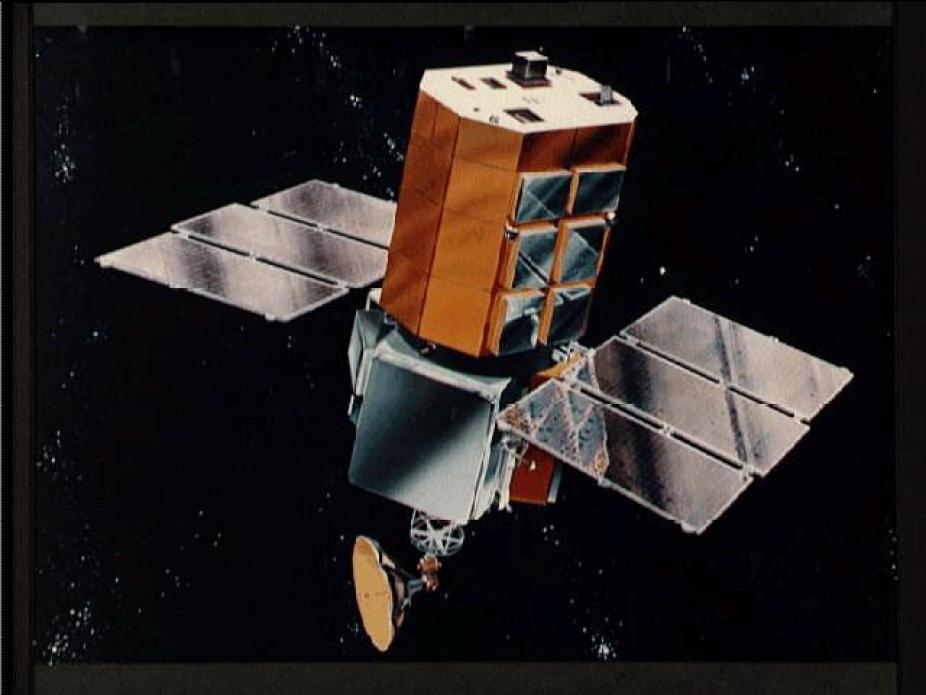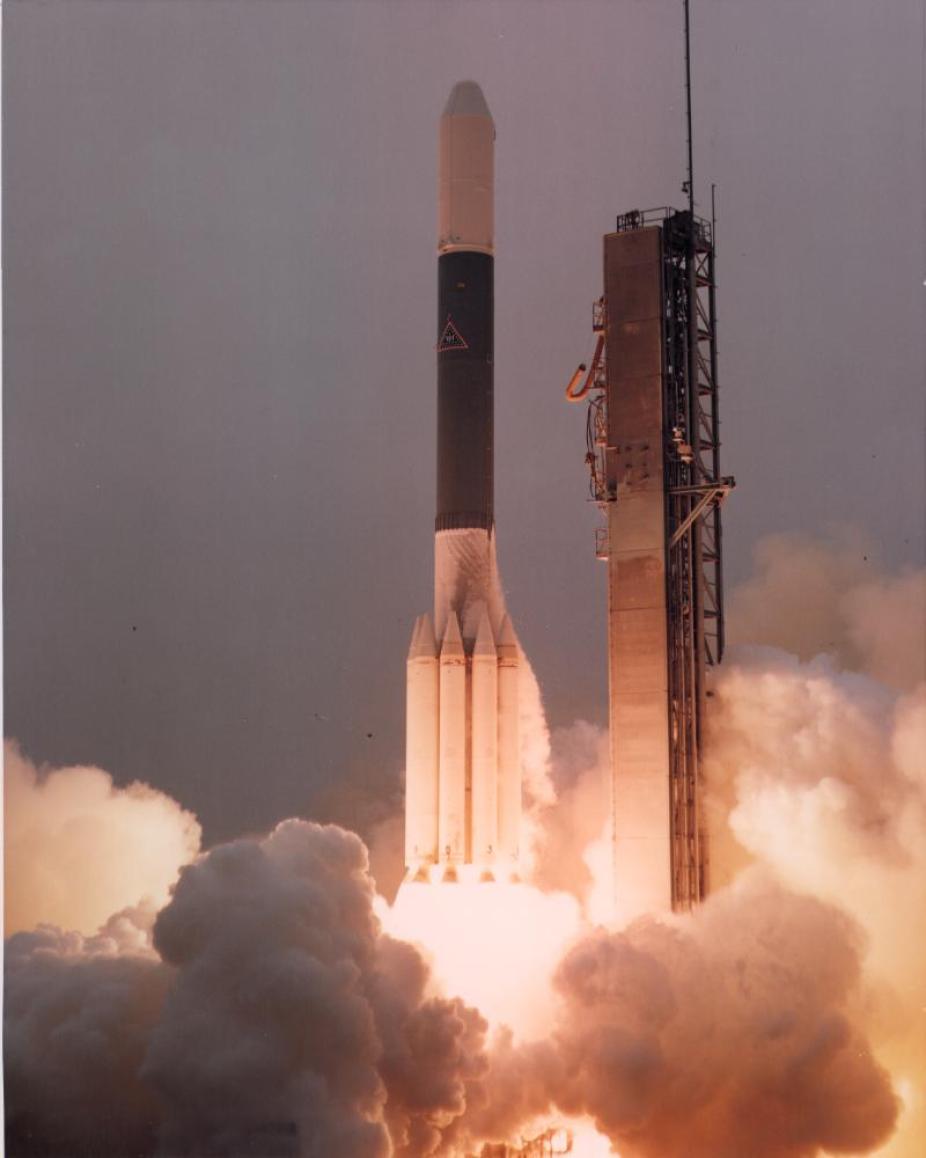Solar Maximum Mission (SMM)

Artist's rendering of SMM in orbit.
The Solar Maximum Mission (SMM) observatory was launched by a Delta rocket on February 14, 1980, from Cape Canaveral, Florida. SMM's payload consisted of eight instruments that provided broad spectral coverage of radiation produced by solar flares. Among SMM's primary science objectives was the study of the dynamics of solar flares and the study of solar magnetic fields associated with the flare phenomenon.

The February 14, 1980 launch of SMM.
The High Altitude Observatory (HAO) provided a white-light coronagraph/polarimeter (C/P) to study the relationship of the corona to the flare process. This instrument obtained coronal images from March through September of 1980 before suffering an electronics failure that rendered it inoperative. A few weeks later, a power failure occurred in the Attitude Control System (ACS) of the SMM spacecraft; consequently, stable pointing of the spacecraft was no longer possible, and the entire spacecraft was put into a dormant ("standby") mode. The SMM spacecraft remained in this state for more than 3 years. The Challenger Space Shuttle ( STS-41C ) was launched on 6 April 1984 to attempt an in-orbit repair of SMM. That mission was successful in replacing both the spacecraft Attitude Control System and the coronagraph's Main Electronics Box.
Atmospheric friction slowly caused the altitude of the SMM spacecraft's orbit to decline. Consequently, the SMM satellite lost attitude control on November 17, 1989, when the spacecraft re-entered the Earth's atmosphere. Re-entry occurred on 2 December 1989 over the Indian Ocean. The coronagraph generated ~240,000 images of the solar corona before its fiery demise.